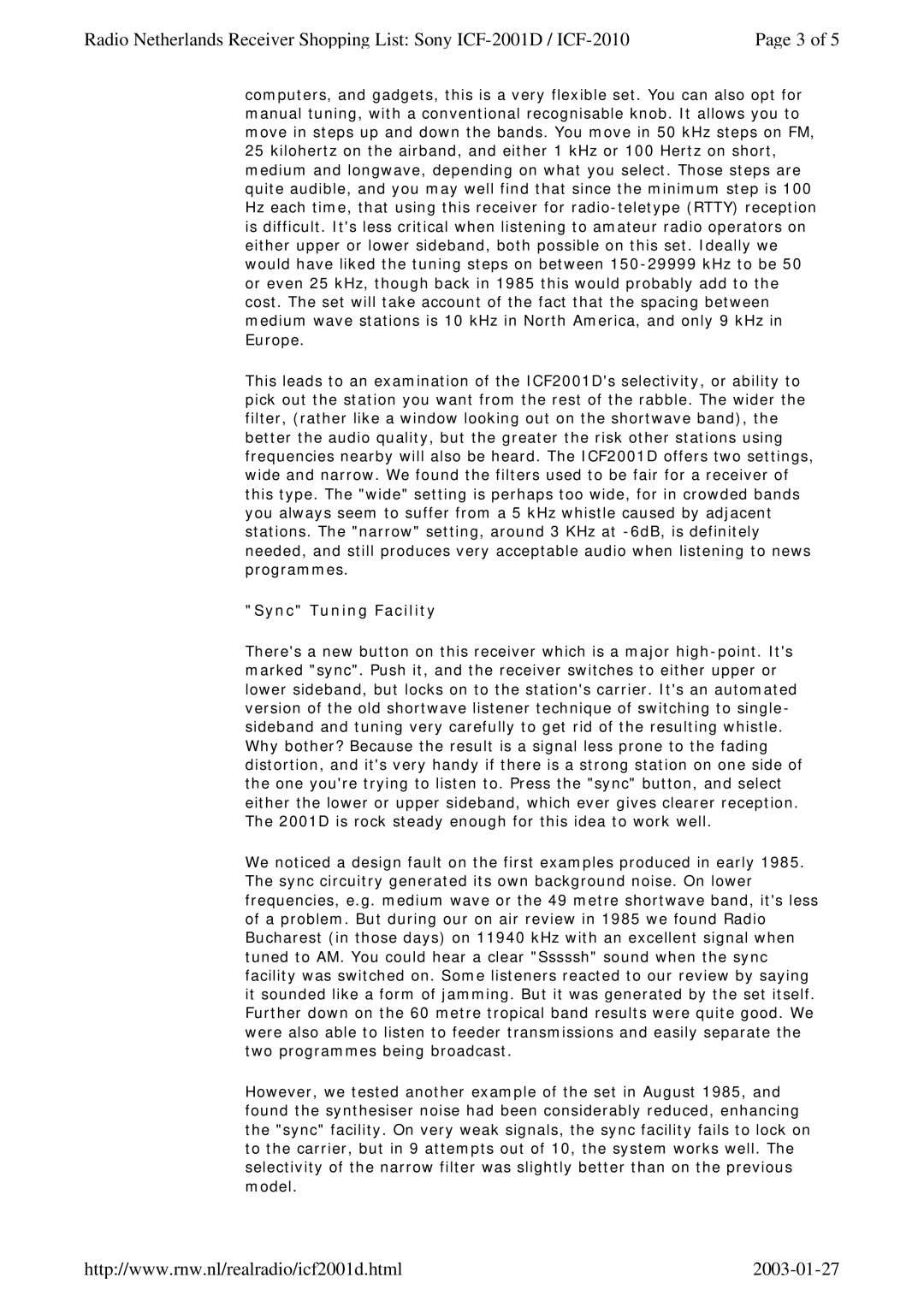Radio Netherlands Receiver Shopping List: Sony | Page 3 of 5 |
computers, and gadgets, this is a very flexible set. You can also opt for manual tuning, with a conventional recognisable knob. It allows you to move in steps up and down the bands. You move in 50 kHz steps on FM, 25 kilohertz on the airband, and either 1 kHz or 100 Hertz on short, medium and longwave, depending on what you select. Those steps are quite audible, and you may well find that since the minimum step is 100 Hz each time, that using this receiver for
This leads to an examination of the ICF2001D's selectivity, or ability to pick out the station you want from the rest of the rabble. The wider the filter, (rather like a window looking out on the shortwave band), the better the audio quality, but the greater the risk other stations using frequencies nearby will also be heard. The ICF2001D offers two settings, wide and narrow. We found the filters used to be fair for a receiver of this type. The "wide" setting is perhaps too wide, for in crowded bands you always seem to suffer from a 5 kHz whistle caused by adjacent stations. The "narrow" setting, around 3 KHz at
"Sync" Tuning Facility
There's a new button on this receiver which is a major
We noticed a design fault on the first examples produced in early 1985. The sync circuitry generated its own background noise. On lower frequencies, e.g. medium wave or the 49 metre shortwave band, it's less of a problem. But during our on air review in 1985 we found Radio Bucharest (in those days) on 11940 kHz with an excellent signal when tuned to AM. You could hear a clear "Sssssh" sound when the sync facility was switched on. Some listeners reacted to our review by saying it sounded like a form of jamming. But it was generated by the set itself. Further down on the 60 metre tropical band results were quite good. We were also able to listen to feeder transmissions and easily separate the two programmes being broadcast.
However, we tested another example of the set in August 1985, and found the synthesiser noise had been considerably reduced, enhancing the "sync" facility. On very weak signals, the sync facility fails to lock on to the carrier, but in 9 attempts out of 10, the system works well. The selectivity of the narrow filter was slightly better than on the previous model.
http://www.rnw.nl/realradio/icf2001d.html |
